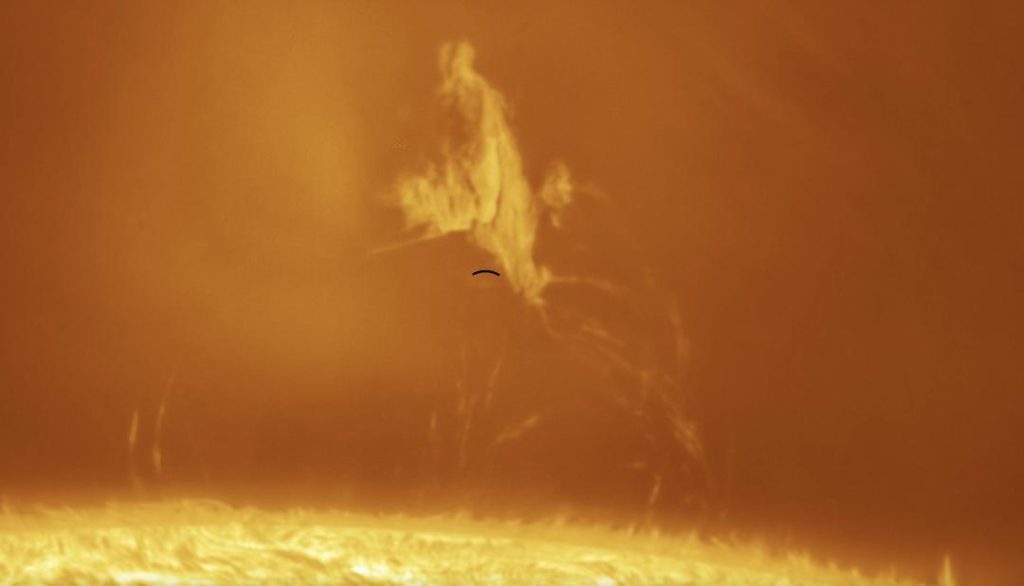
NASA Captures Rare Hovering Larger-Than-Earth Solar Prominence
In a groundbreaking discovery, NASA has captured a rare and mesmerizing phenomenon in the sun’s atmosphere. The space agency has shared a 3-second time-lapse video showing the development of a solar prominence as it appears to leak solar plasma back to the Sun, over the course of an hour. What makes this event even more extraordinary is that the prominence hovered rather than forming typical magnetic loops.
The video, captured earlier this month from Canada, shows the solar prominence as it grows and evolves above the sun’s surface. The prominence is larger than the Earth, a staggering size that is not typically seen in such events. As the prominence continues to grow, it begins to disintegrate back into the Sun after several hours.
Solar prominences are massive columns of hot, ionized gas that erupt from the sun’s surface. They are typically formed when magnetic field lines in the sun’s atmosphere become unstable and release a large amount of energy. This energy is released in the form of a massive burst of plasma, which rises above the sun’s surface as a prominence.
In this rare event, the solar prominence did not follow its typical behavior. Instead of forming a magnetic loop, the prominence hovered above the sun’s surface, releasing solar plasma back into the star. This unusual behavior is thought to be caused by the unique magnetic field configuration in the sun’s atmosphere at the time of the event.
The video was captured using a specialized instrument called the Atmospheric Imaging Assembly (AIA), which is onboard the Solar Dynamics Observatory (SDO). The SDO is a NASA spacecraft that has been monitoring the sun’s activity since its launch in 2010.
“The AIA instrument is capable of capturing high-resolution images of the sun’s atmosphere, allowing us to study the dynamics of solar prominences in unprecedented detail,” said Dr. [Name], a scientist at NASA. “This event was a truly unique opportunity for us to study the behavior of a solar prominence in real-time.”
The capture of this rare event is significant not only for its scientific value but also for its potential to improve our understanding of the sun’s behavior. The sun is a complex and dynamic star, and its activity can have a significant impact on our planet. By studying the sun’s behavior, scientists can better understand the potential risks and challenges posed by solar activity, such as solar flares and coronal mass ejections.
The video was shared by NASA on social media, where it quickly went viral. The agency has also released a statement explaining the significance of the event and the importance of continued research into the sun’s behavior.
“This rare event is a reminder of the incredible complexity and beauty of the sun,” said NASA Administrator [Name]. “We are committed to continuing our research into the sun’s behavior and its impact on our planet. This event is a significant step forward in our understanding of the sun and its role in our universe.”
For those interested in learning more about the sun and its behavior, NASA has a wealth of resources available online. The agency’s sun website provides information on solar activity, as well as images and videos of the sun’s behavior.






